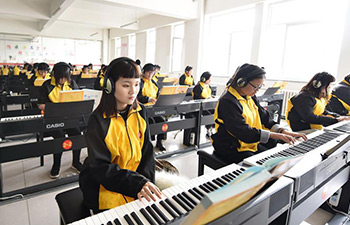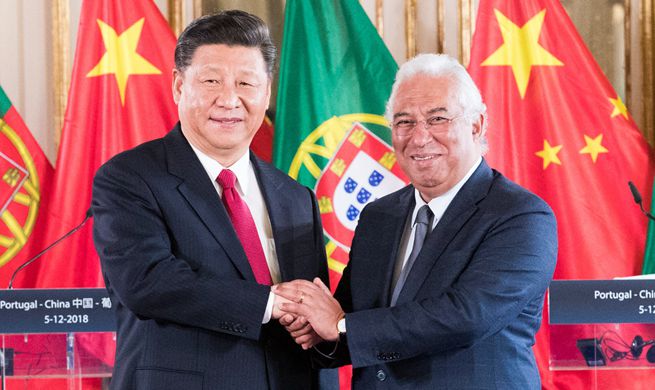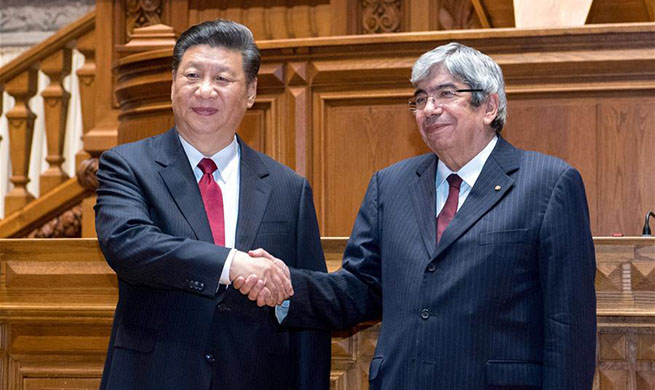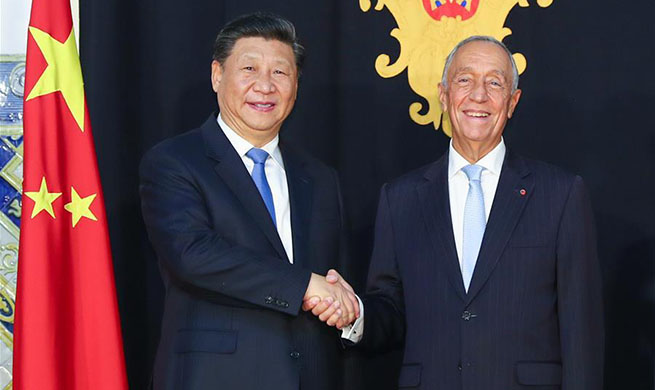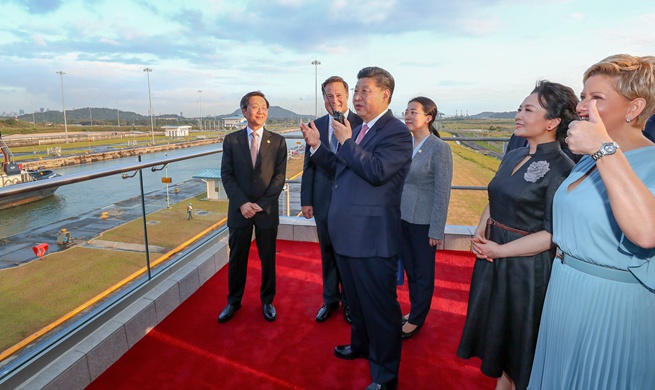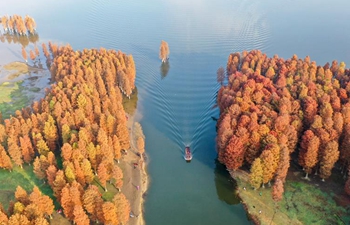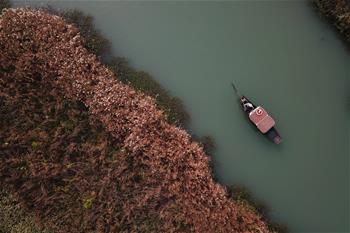HOHHOT, Dec. 6 (Xinhua) -- Over the past 40 years, technological advances have brought sweeping changes to the vast grasslands of Inner Mongolia Autonomous Region, which occupies more than 12 percent of China's land area.
SMARTPHONES
Using just his mobile phone, Erdenet can control the water pumps for the wells across his 733 hectares of grassland, and the automatic drinking system will provide adequate water for his sheep.
Erdenet, a 46-year-old herdsman from the Xini Township of Hanggin Banner, once cracked a herding whip to drive his sheep and every day, he would manually turn the water pumps on and off -- a painstaking task.
Now his phone is the only tool he uses to herd the sheep and run the farm.
Technologies ranging from automatic feeding and drinking machines to smart fences and remote-controlled irrigation systems have not only made the lives of herdsmen easier but also raised their incomes and freed many people from a life of drudgery.
"Thanks to the intelligent grazing system, we can easily manage 1,500 sheep with two people. It would take at least eight people to do the same work the traditional way," Erdenet said.
HOUSES AND CARS
Living a nomadic life, Boldbater from Xilin Gol League, had to carry his tent and move from one pasture to another in the past.
Two years ago, he bought a moveable and energy-efficient house with a floor area of 60 square meters. Specially designed by architects for nomads, the house is equipped with thermal insulating walls and a solar heating system.
"I have stopped burning wood to keep warm. My house is as warm as spring when it's freezing cold outside in winter," Boldbater said.
Another Boldbater from Sonid Left Banner made a different decision. He decided to say goodbye to the nomadic life and settle down in a brick house.
"It's no different from the houses in cities. We have a modern kitchen, computer, fridge, 24-hour hot water, and even wifi," he said.
Changes in transportation have also occurred. Badema recently donated her lele cart, a Mongolian-style ox cart, to a museum in her hometown, East Ujimqin Banner.
It was a dowry offered by her parents when she got married 40 years ago. With motorcycles and cars becoming commonplace, the role of lele carts has withered in Mongolian life.
By the end of 2017, the number of private cars in the region surpassed 2.7 million, compared with around 10,000 in 1987.
STORES AND E-COMMERCE
Inner Mongolia is in north China and borders Mongolia and Russia. It has a population of more than 25 million, including 4.6 million Mongolians -- nearly one-fifth of the region's total population.
In addition to the material changes, people's mindsets have also changed as well. In history, ethnic minority groups including Mongolians paid very little attention to business.
Siqinbater, who grew up in a pasture in Xianghuang Banner, runs a store selling dairy products. Being a merchant was not regarded as a decent job when he was young.
"Mongolians never sold their sheep or cattle in the past, but things are different now. Everything is market-oriented, and we will change our livestock production structure in accordance with the market needs," Siqinbater said.
The Internet has brought products from around the country to Enhgyirigarlang Village in the East Ujimqin Banner, Xilin Gol League, where herders live as far as dozens of kilometers from the city center.
Su Mongh manages an e-commerce station where herders can pick up the products they buy online. He said local residents in the past expected the postman to bring their letters, but now, they expect products they have bought online.
"The Internet has not only shortened the distance between us and the world but also allows herders access to the global marketplace, even in remote areas," Su Mongh said.






